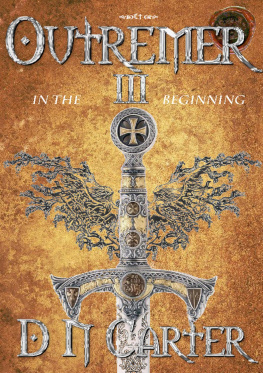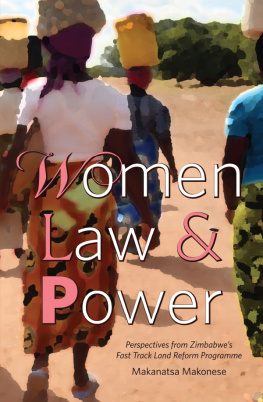University of Manitoba Press
Winnipeg, Manitoba
Canada R3T 2M5
uofmpress.ca
Sarah Carter 2016
Printed in Canada
20 19 18 17 16 1 2 3 4 5
All rights reserved. No part of this publication may be reproduced or transmitted in any form or by any means, or stored in a database and retrieval system in Canada, without the prior written permission of the University of Manitoba Press, or, in the case of photocopying or any other reprographic copying, a licence from Access Copyright (Canadian Copyright Licensing Agency). For an Access Copyright licence, visit www.accesscopyright.ca, or call 1-800-893-5777.
Cover design: Frank Reimer
Interior design: Jess Koroscil
Cover image: Sarah Minnie (Waddy) Gardner on her horseFly,Mount Sentinel Ranch, Alberta, 1915. Born Wexford, Ireland, 1879, died Calgary, 1959. Museum of the Highwood, MH995.002.008.
Cataloguing data available from Library and Archives Canada.
ISBN 978-0-88755-818-4 (pbk.)
ISBN 978-0-88755-532-9 (pdf )
ISBN 978-0-88755-530-5 (epub)
This book has been published with the help of a grant from the Federation for the Humanities and Social Sciences, through the Awards to Scholarly Publications Program, using funds provided by the Social Sciences and Humanities Research Council of Canada.
The University of Manitoba Press gratefully acknowledges the financial support for its publication program provided by the Government of Canada through the Canada Book Fund, the Canada Council for the Arts, the Manitoba Department of Culture, Heritage, Tourism, the Manitoba Arts Council, and the Manitoba Book Publishing Tax Credit.
TO MY GRANDMOTHER JEAN MUNN (JENNIE MAY MARSHALL), 18991967, BORN ON HER PARENTS HOMESTEAD, WELLWOOD, MANITOBA.
Photo: FamilyCollection.
During my stay in Canada I heard a good deal about farming for women, and how they ought to take up homesteads, therefore I was interested to come across the young daughters of a neighbouring farmer, who acted as hired men to their father. Mrs. Anderson [her employer] said they rode wonderfully, could handle a team better than most men, drive the binders, and do the whole work of a farm; but she considered that the life they led was unsuitable for a woman and was unfitting these girls for becoming wives and mothers in the futurein fact, the feeling of the countryside was strongly against their father.
Ella C. Sykes, A Home-Help in Canada, 1912
People are beginning to waken up to the vast conception and imperialistic importance of tendering free homesteads as an inducement to women of strong moral force and high intellectual ability to come to our beautiful West and lend their aid in establishing a Canadian colony, a new and clean colony
Homesteads for Women, by Isobel, Grain Growers Guide, 25 October 1911
CONTENTS
LIST OF ILLUSTRATIONS
LIST OF TABLES
ACKNOWLEDGEMENTS
If I were to identify when the initial seed of this project was planted it would be the first class I taught at the University of Calgary, a full-year night class in 199293 on Western Canada. We learn a lot from our students, and in that class one wrote an excellent essay on the homesteads-for-women campaign in Western Canada. It was new to me. Thanks to Richelle Brazunas, wherever you are! Having worked up to that time on how First Nations male farmers were stigmatized and excluded from the commercial grain economy I began to see other forms of exclusion through the distribution of land and roles in the settler colony of the West. And while some women worked to bring about a reconfiguration of this distribution, challenging and calling into question the reigning order of common sense about who could farm and own land, they (unfortunately) worked in the interests of a privileged few of British ancestry. Yet even if they had chosen another strategy, they would have found that this distribution of the sensible remained intransigent and impervious to calls for change.
I have drawn on archives and libraries in Canada, the U.S, the U.K., and eventually as far away as Australia. I would like in particular to acknowledge the help of the archivists at the Saskatchewan Archives Board, the Archives of Manitoba, the Provincial Archives of Alberta, and the Glenbow Archives. Among the many archivists and librarians who have assisted me, I want to give special thanks to Sharon Maier, Regina Public Library; Susan Kooyman and Doug Cass at the Glenbow; Chris Kotecki and Eric Hallett at the Archives of Manitoba; Philip Hatfield and Carole Holden at the British Library; and Nadine Charabin at the Saskatchewan Archives, Saskatoon. Irene Kerr, Museum of the Highwood, searched their collection and provided the cover photograph for this book. Thanks also to Ken Robison and Henry L. Armstrong of the Overholser Historical Research Center in Fort Benton, Montana.
The Social Sciences and Humanities Research Council of Canada assisted me in this study, as did a Killam Research Fellowship. The research funds available to me as a University of Alberta Henry Marshall Tory Chair have been of critical importance to this project. My research in the U.K. was facilitated by several appointments for which I am very grateful: Eccles Visiting Professorship in North American Studies at the British Library; Visiting Fellow, Institute of Commonwealth Studies, University of London; and Visiting Scholar, Centre of Canadian Studies, University of Edinburgh. I visited the Australian National Archives while a Visiting Fellow at Australian National Universitys Research School of Social Sciences and its Australian Centre for Indigenous History. Thanks to Philip Davies, Eccles Centre at the British Library; Philip Murphy at the Institute for Commonwealth Studies; Annis May Timpson, Canadian Studies, University of Edinburgh; and Maria Nugent, Australian National University.
Countless scholars over many years have inspired and encouraged me, and helped refine and clarify this project, as have conference sessions and invitations to speak or write. Special thanks to Ashleigh Androsoff, Jean Barman, Philip Buckner, Cathy Cavanaugh, Tonia Compton, Nancy Janovicek, Betsy Jameson, Fran Kaye, Nanci Langford, Briony McDonagh, Linda Mahood, Laurie Mercier, James Muhn, Maria Nugent, Adele Perry, Joan Sangster, Nikki Strong-Boag, Georgie Taylor, Nicola Verdun, and Angela Wanhalla. Thanks to my colleagues at the Universities of Alberta and Calgary.
I am very grateful to my research assistants: Gretchen Albers, Alana Borque, Sydney Budgeon, Suzanne Daugela, Karine Duhamel, Corinne George, Patricia Gordon, Leslie Hall, Michel Hogue, Pernille Jakobsen, Amy McKinney, Erin Millions, Cheryl Purdey, Trevor Rockwell, and Claire Thomson. Special thanks to Catherine Ulmer for her help with the South African Scrip women homesteaders of Saskatchewan, and to Sara Tokay, who has been of great assistance with the many tasks of the home stretch.
The Alberta content of this book was enhanced by the University of Albertas project Last Best West: The Alberta Land Settlement Infrastructure Project, funded by the Canada Foundation for Innovation, with Peter Baskerville as principal investigator and Sean Gouglas (and me) as co-investigators. The project digitized Alberta homestead files and made them available on the Web. Students and other employees hired for this project created an enormous databank from these files. They also alerted me to interesting homestead stories. Special thanks to Katie Pollock, Leigh Johnson, Silvia Russell, Richard Fletcher, and Melanie Niemi-Bohun as well as to Peter Baskerville and Sean Gouglas.

















